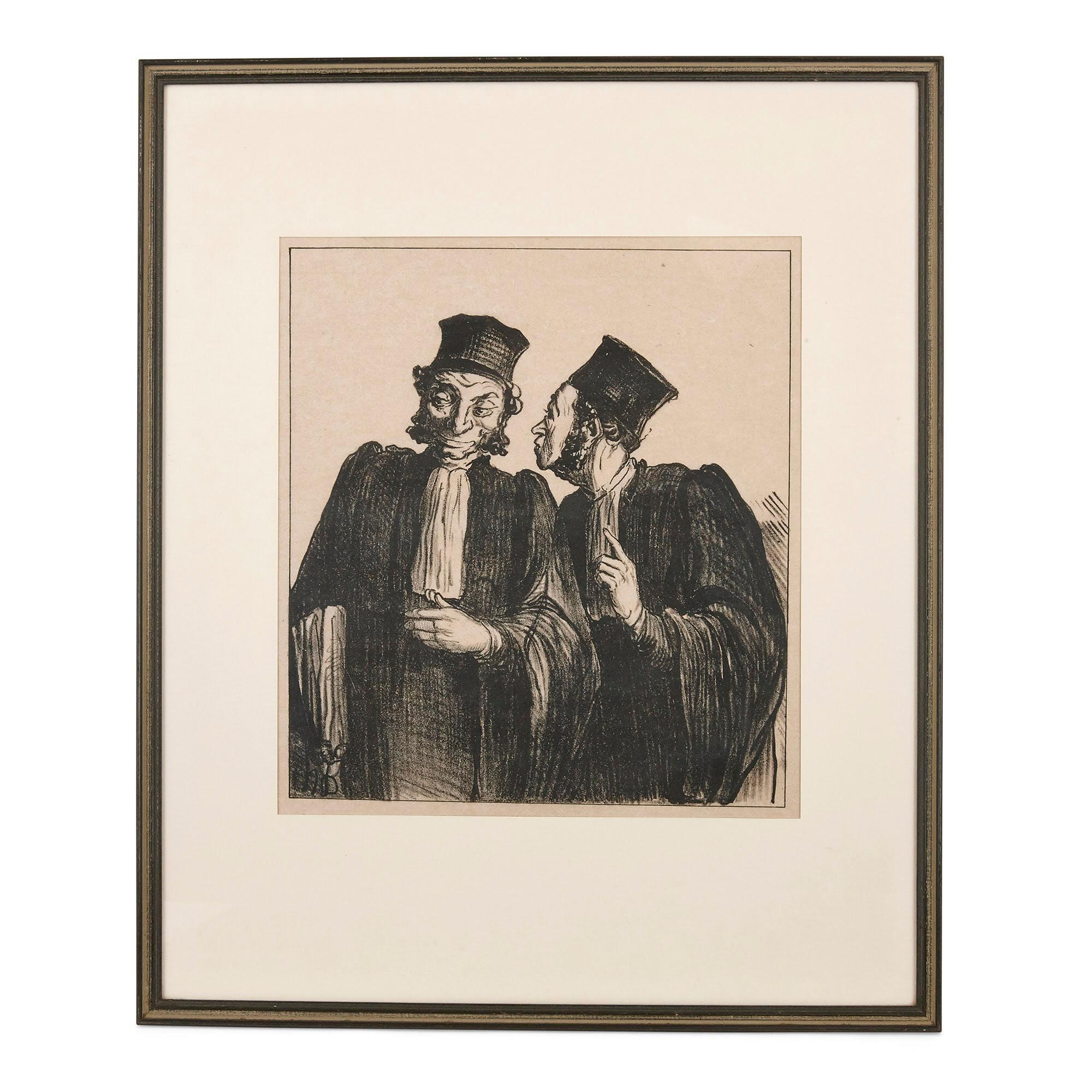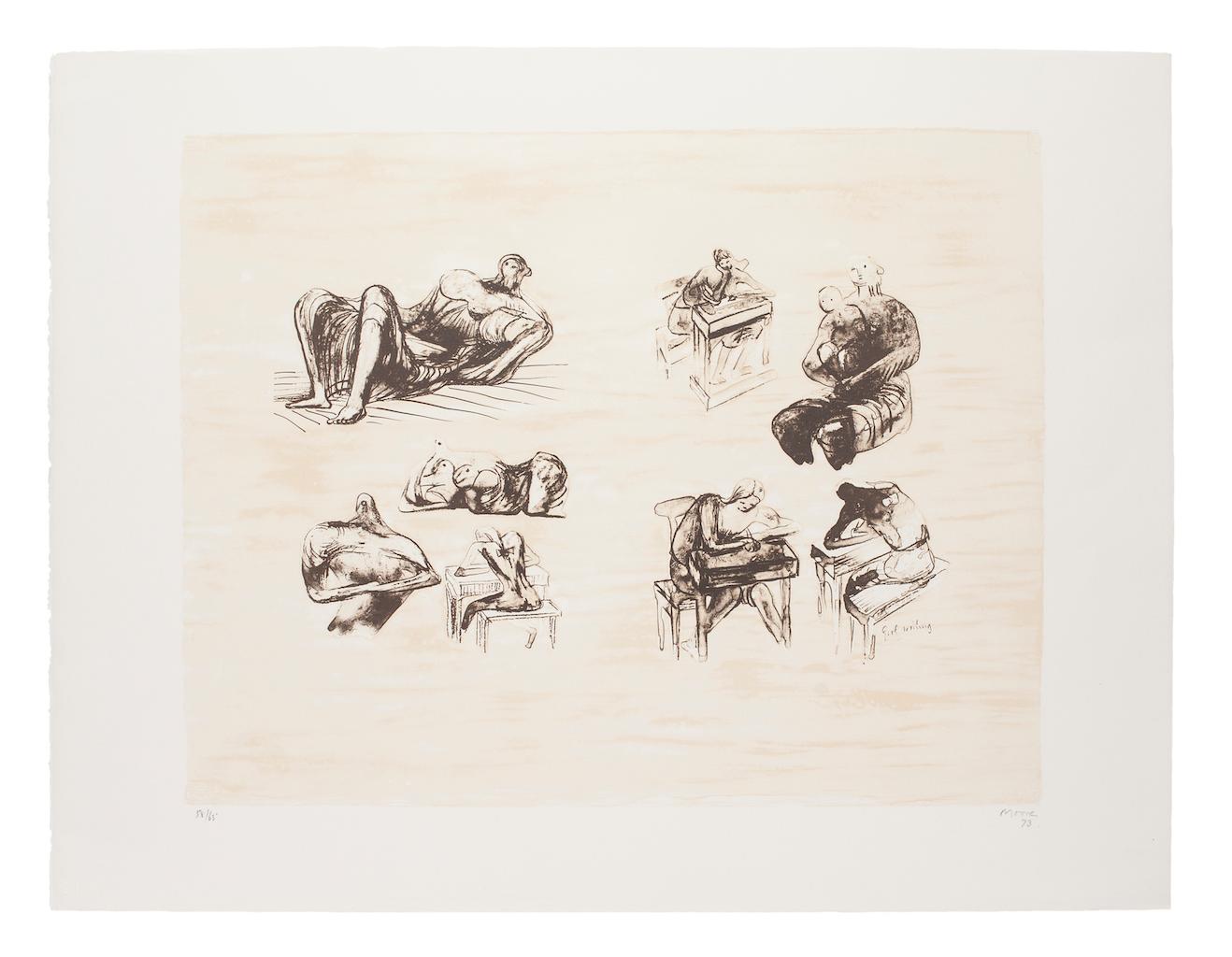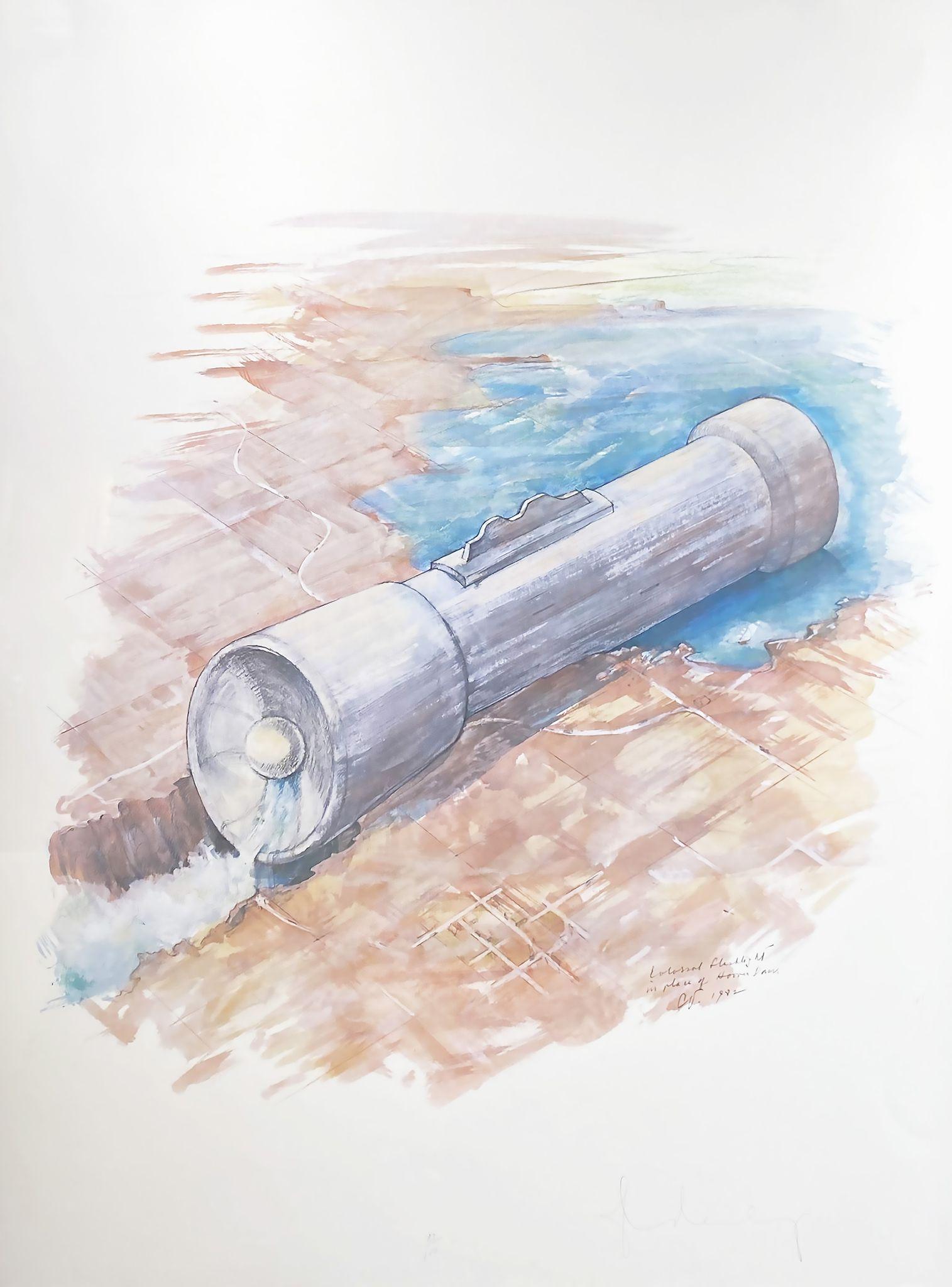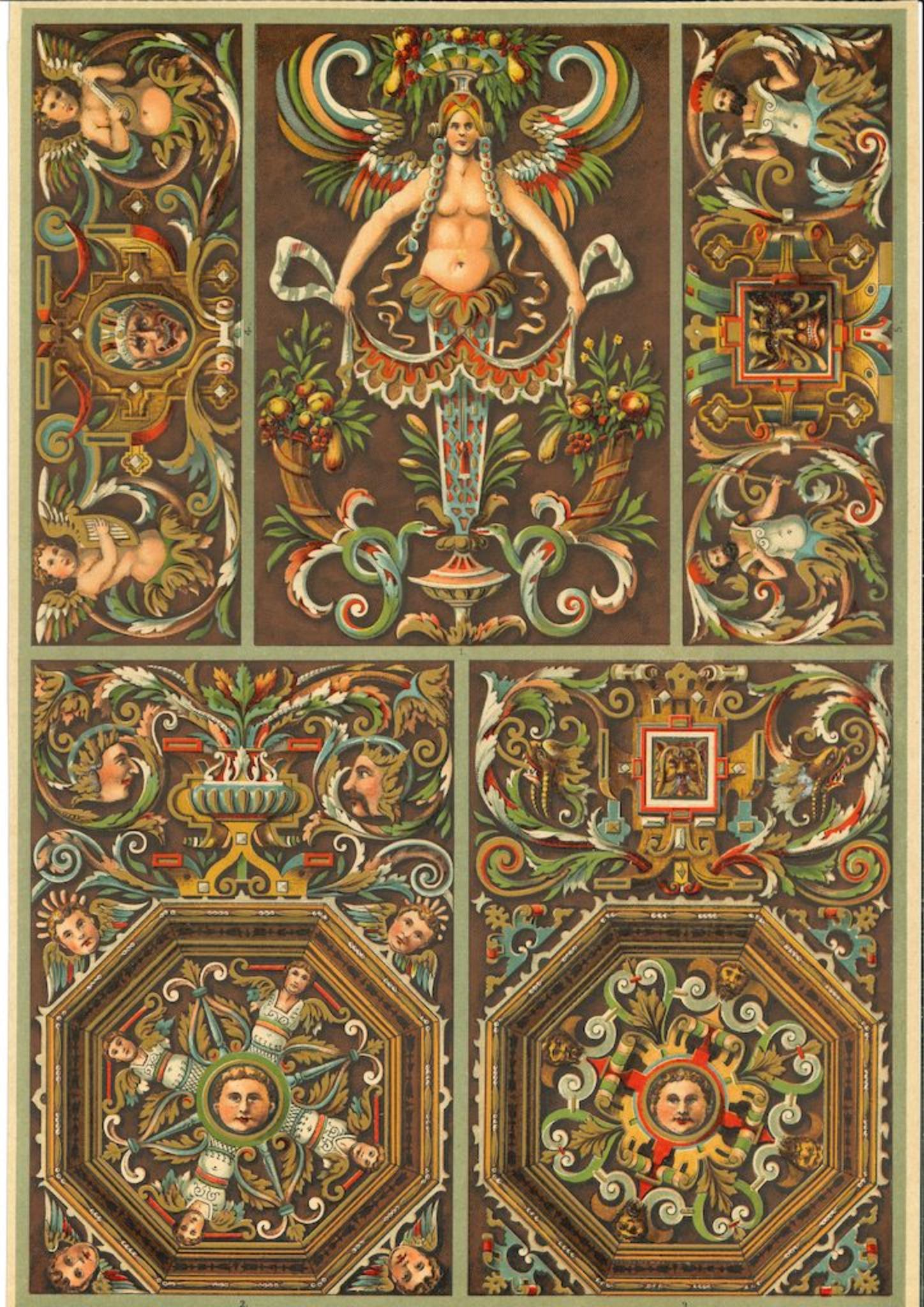Items Similar to Decorative Motifs - Original Chromolithograph - Early 20th Century
Want more images or videos?
Request additional images or videos from the seller
1 of 2
UnknownDecorative Motifs - Original Chromolithograph - Early 20th CenturyEarly 20th Century
Early 20th Century
About the Item
Decorative Motifs of the Indian Renaissance is a vintage chromolithograph realized by an anonymous artist in the early 20th Century.
Good conditions.
The artwork represents Decorative motifs of the Indian Renaissance in a well-balanced composition.
- Creation Year:Early 20th Century
- Dimensions:Height: 11.82 in (30 cm)Width: 7.88 in (20 cm)Depth: 0.04 in (1 mm)
- Medium:
- Period:
- Framing:Framing Options Available
- Condition:Insurance may be requested by customers as additional service, contact us for more information.
- Gallery Location:Roma, IT
- Reference Number:
About the Seller
4.9
Platinum Seller
These expertly vetted sellers are 1stDibs' most experienced sellers and are rated highest by our customers.
1stDibs seller since 2017
6,818 sales on 1stDibs
Typical response time: 3 hours
- ShippingRetrieving quote...Ships From: Rome, Italy
- Return PolicyA return for this item may be initiated within 14 days of delivery.
More From This SellerView All
- Eight Sculptural Ideas - Lithograph by Henry Moore - 1973By Henry MooreLocated in Roma, ITEight Sculptural Ideas is an original lithograph realized by the British artist Henry Moore (Castleford, 1898 - Much Hadham, 1986). Hand-signed and...Category
1970s Contemporary More Prints
MaterialsPaper, Lithograph
- Decorative Motifs - Original Chromolithograph - Early 20th CenturyLocated in Roma, ITDecorative Motifs of the Italian Renaissance is a vintage chromolithograph realized by an anonymous artist in the early 20th Century. Good conditions. The artwork represents Decora...Category
Early 20th Century More Prints
MaterialsPaper, Lithograph
- Decorative Motifs of the German Renaissance -Chromolithograph-Early 20th CenturyLocated in Roma, ITDecorative motifs of the German Renaissance is a vintage chromolithograph by an anonymous artist of the early 20th Century. Good conditions. The artwork represents Decorative motif...Category
Early 20th Century More Prints
MaterialsPaper, Lithograph
- Decorative Motifs of the Egyptian Renaissance - Chromolithograph - 20th CenturyLocated in Roma, ITDecorative Motifs of the Egyptian Renaissance is a vintage chromolithograph realized by an anonymous artist in the early 20th Century. Good conditions. The artwork represents Decor...Category
Early 20th Century More Prints
MaterialsPaper, Lithograph
- Japanese Decorative Motifs - Vintage Chromolithograph - Early 20th CenturyLocated in Roma, ITJapanese Decorative Motifs is a vintage chromolithograph realized by an anonymous artist in the early 20th Century. Good conditions. The artwork rep...Category
Early 20th Century More Prints
MaterialsPaper, Lithograph
- Decorative Motifs - Original Chromolithograph - Early 20th CenturyLocated in Roma, ITDecorative Motifs of the Indian Renaissance is a vintage chromolithograph realized by an anonymous artist in the early 20th Century, Good conditions.Category
Early 20th Century More Prints
MaterialsPaper, Lithograph
You May Also Like
- Two lawyers from 'Croquis Parisiens'By Honoré DaumierLocated in London, GBThis witty lithograph is by the 19th Century French satirist Honoré Daumier. The print portrays a pair of lawyers, both dressed for court, one lawyer furtively speaking to the other....Category
Mid-19th Century Figurative Prints
MaterialsPaper, Lithograph
- "Chac #2" - Sky Blue Geometric Mayan Chac Mool LithographLocated in Soquel, CAModern and bold abstract geometric composition of Mayan sculpture Chac Mool in sky blue by Marilyn Kruger (American, 20th Century). Numbered, titled, and signed ("1/5 Chac #2 Marilyn Kruger") along the lower edge. No frame. Chac Mool is sculpture of a reclining male figure holding a bowl on his torso. They were given the invented name Chac Mool by nineteenth-century explorers during an archaeological expedition to Chichen Itza...Category
Late 20th Century Abstract Geometric Abstract Prints
MaterialsPaper, Lithograph
- Colossal Flashlight in Place of Hoover DamBy Claes OldenburgLocated in Missouri, MOColossal Flashlight in Place of Hoover Dam, 1982 By Claes Oldenburg (Swedish, American, 1929-2022) Signed Lower Right Dated Middle Right Unframed: 23" x 22" Framed: 36.5" x 27.5" Whimsical sculpture of pop culture objects, many of them large and out-of-doors, is the signature work of Swedish-born Claes Oldenburg who became one of America's leading Pop Artists. He was born in Stockholm, Sweden. His father was a diplomat, and during Claes' childhood moved his family from Stockholm to a variety of locations including Chicago where the father was general consul of Sweden and where Oldenburg spent most of his childhood. He attended the Latin School of Chicago, and then Yale University where he studied literature and art history, graduating in 1950, the same year Claes became an American citizen. Returning to Chicago, he enrolled at the Art Institute of Chicago from 1952 to 1954 and also worked as a reporter at the City News Bureau. He opened his own studio, and in 1953, some of his satirical drawings were included in his first group show at the Club St. Elmo, Chicago. He also painted at the Oxbow School of Painting in Michigan. In 1956, he moved to New York where he drew and painted while working as a clerk in the art libraries of Cooper-Union Museum for the Arts of Decoration. Selling his first artworks during this time, he earned 25 dollars for five pieces. Oldenburg became friends with numerous artists including Jim Dine, Red Grooms and Allan Kaprow, who with his "Happenings" was especially influential on Oldenburg's interest in environmental art. Another growing interest was soft sculpture, and in 1957, he created a piece later titled Sausage, a free-hanging woman's stocking stuffed with newspaper. In 1959, he had his first one-man show, held at the Judson Gallery at Washington Square. He exhibited wood and newspaper sculpture and painted papier-mache objects. Some viewers of the exhibit commented how refreshing Oldenburg's pieces were in contrast to the Abstract Expressionism, a style which much dominated the art world. During this time, he was influenced by the whimsical work of French artist, Bernard Buffet, and he experimented with materials and images of the junk-filled streets of New York. In 1960, Oldenburg created his first Pop-Art Environments and Happenings in a mock store full of plaster objects. He also did Performances with a cast of colleagues including artists Lucas Samaras, Tom Wesselman, Carolee Schneemann, Oyvind Fahlstrom and Richard Artschwager, dealer Annina Nosei, critic Barbara Rose, and screenwriter Rudy Wurlitzer. His first wife (1960-1970) Pat Muschinski, who sewed many of his early soft sculptures, was a constant performer in his Happenings. This brash, often humorous, approach to art was at great odds with the prevailing sensibility that, by its nature, art dealt with "profound" expressions or ideas. In December 1961, he rented a store on Manhattan's Lower East Side to house "The Store," a month-long installation he had first presented at the Martha Jackson Gallery in New York. This installation was stocked with sculptures roughly in the form of consumer goods. Oldenburg moved to Los Angeles in 1963 "because it was the most opposite thing to New York I could think of". That same year, he conceived AUT OBO DYS, performed in the parking lot of the American Institute of Aeronautics and Astronautics in December 1963. In 1965 he turned his attention to drawings and projects for imaginary outdoor monuments. Initially these monuments took the form of small collages such as a crayon image of a fat, fuzzy teddy bear looming over the grassy fields of New York's Central Park (1965) and Lipsticks in Piccadilly Circus, London (1966). Oldenburg realized his first outdoor public monument in 1967; Placid Civic Monument took the form of a Conceptual performance/action behind the Metropolitan Museum of Art, New York, with a crew of gravediggers digging a 6-by-3-foot rectangular hole in the ground. Many of Oldenburg's large-scale sculptures of mundane objects elicited public ridicule before being embraced as whimsical, insightful, and fun additions to public outdoor art. From the early 1970s Oldenburg concentrated almost exclusively on public commissions. Between 1969 and 1977 Oldenburg had been in a relationship with Hannah Wilke, feminist artist, but in 1977 he married Coosje van Bruggen, a Dutch-American writer and art historian who became collaborator with him on his artwork. He had met her in 1970, when she curated an exhibition for him at the Stedelijk Museum in Amsterdam. Their first collaboration came when Oldenburg was commissioned to rework Trowel I, a 1971 sculpture of an oversize garden tool, for the grounds of the Kröller-Müller Museum in Otterlo, the Netherlands. Oldenburg has officially signed all the work he has done since 1981 with both his own name and van Bruggen's. In 1988, the two created the iconic Spoonbridge and Cherry sculpture for the Walker Art Center in Minneapolis, Minnesota that remains a staple of the Minneapolis Sculpture Garden as well as a classic image of the city. Typewriter Eraser...Category
20th Century American Modern Abstract Prints
MaterialsPaper, Lithograph
- Original lithograph poster for "Miro 100 Sculptures 1962-1978" 1978 exhibitionBy Joan MiróLocated in Boca Raton, FLOriginal poster for 1978 "Miró 100 sculptures 1962-1978" exhibition of sculptures by Joan Miró. Purchased from the Musée d'art moderne de la Ville de Paris. Beautifully printed litho...Category
1970s Modern More Prints
MaterialsPaper, Lithograph
- Hawaiian IconBy Robert FreimarkLocated in San Francisco, CAArtist: Robert Freimark – American (1922-2010) Title: Hawaiian Icon Date: 1991 Medium: Lithograph in 5 colors on Somerset paper Image size: 22 x 30 inc...Category
1990s Contemporary More Prints
MaterialsPaper, Lithograph
- Deck of a Man o' War / Le Vauban (cuirassé)By Paul Leon JazetLocated in Middletown, NYLithograph on Les Lettres et les Arts watermarked cream wove paper with deckle edges, 8 3/4 x 10 1/2 inches (220 x 265 mm), full margins. Signed, titled, and numbered 34/52 in penci...Category
Late 19th Century French School Figurative Prints
MaterialsHandmade Paper, Lithograph
Recently Viewed
View AllMore Ways To Browse
Antique Chromolithograph
Antique Chromolithographs
Adrian Parcel
Albert Staehle
Alice In Wonderland Guinness
Amado Gonzalez
Amalfi Coast Poster
Amalfi Coast Vintage Poster
Amalfi Poster
Amalfi Retro Poster
Andy Warhol Beef Soup
Anouk Aimee
Antique Horse Hobble
Anton Seder
Banksy Monkey Parliament
Barbados Travel Poster
Billy Bowlegs
Bmw Motorcycle Helmet





